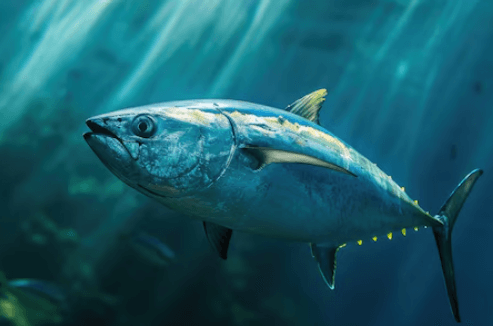
The adaptations of ocean fish are a testament to nature’s ingenuity, enabling them to inhabit environments ranging from sunlit coral reefs to the dark abyssal plains. These remarkable species have developed distinct traits, such as specialized buoyancy and bioluminescence, which facilitate their survival in challenging conditions. However, as we explore these adaptations, it becomes evident that these fish are facing unprecedented conservation challenges that threaten their existence. The implications of our current practices may not only affect individual species but also the broader marine ecosystem—raising critical questions about sustainability that warrant further examination.
Unique Characteristics of Ocean Fish
Ocean fish exhibit a remarkable array of unique characteristics that enable them to thrive in diverse marine environments, including specialized adaptations for buoyancy, respiration, and thermoregulation.
Notably, bioluminescent species utilize light for communication and predation, enhancing their survival.
Furthermore, predatory adaptations, such as sharp teeth and streamlined bodies, equip these fish with the necessary tools to capture prey efficiently in the vast oceanic expanse.
See also: Outline:Ikat4nrfmfc= Heart Clipart
Diverse Habitats and Ecosystems
The vast expanse of the marine environment encompasses a variety of habitats and ecosystems, each supporting distinct communities of ocean fish adapted to specific conditions and resources.
Coral reefs, rich in biodiversity, contrast with the abyssal depths of deep sea ecosystems.
Coastal wetlands serve as vital nurseries, while pelagic zones host migratory species, illustrating the complex interdependencies within these dynamic marine environments.
Conservation Challenges and Solutions
Conservation challenges facing ocean fish populations stem from a multitude of factors, including overfishing, habitat degradation, and climate change, necessitating comprehensive strategies to ensure their sustainability.
Overfishing impacts disrupt ecological balance, while habitat restoration initiatives are vital for rehabilitating marine environments.
Effective management practices must prioritize sustainable fishing and habitat protection to mitigate these threats and preserve the freedom of marine biodiversity for future generations.
To achieve these goals, more people need to join the marine fish protection action, jointly protect the overall health of the marine environment and marine biodiversity, make Custom Keyrings of threatened fish, and use them in the most conspicuous place. Use it to explain to others the threats faced by marine fish, call on people to pay attention to the living environment of marine fish, pay attention to the protection of the ocean, and strive for sustainable development.

Conclusion
In conclusion, ocean fish exhibit extraordinary adaptations that facilitate survival in a variety of marine environments.
Remarkably, over 30% of global fish stocks are currently overfished, highlighting the urgency for sustainable fishing practices.
Implementing effective conservation strategies, such as habitat restoration and regulated fishing, is essential for maintaining biodiversity and ensuring the resilience of marine ecosystems.
Protecting these species not only preserves their unique characteristics but also sustains the overall health of oceanic environments critical to human life.




